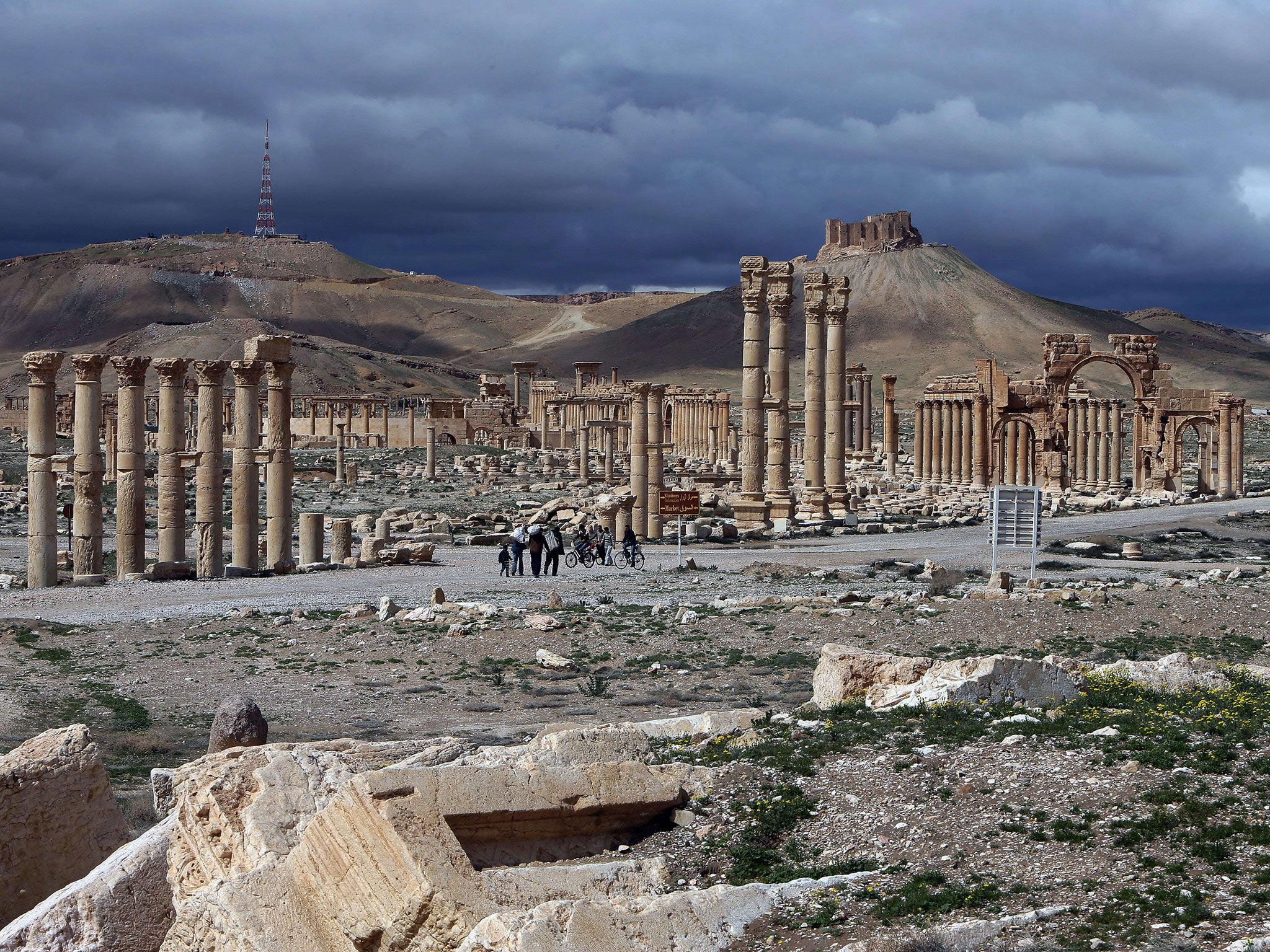Isis seizes Palmyra: Tragically, enchanting ruins of the ancient Syrian city are destined to be destroyed
There can be little doubt the militants will destroy all they see - Unesco World Heritage site, or not

Palmyra had already suffered. Its castle was occupied by the troops of Bashar al-Assad, rocket launchers fired from within the ruins in a fight against moderate rebels. Columns that stood for 2,000 years collapsed. Some smaller artworks were looted.
Now, however, it falls under the ever-increasing territories occupied by Isis – the same Isis that hacked at the face of Nimrud, a 3,000-year-old Assyrian city in Iraq. The same Isis that ransacked Mosul’s antiquities museum with sickening glee.
For some small time Palmyra may remain one of the most enchanting sights in the Middle East. As the sun sets over its ancient ruins, the stonework of the 2,000-year-old Temple of Bel turns red. Shadows of the grand colonnaded street stretch across the sand. The silence of the desert only seems to grow ever more profound. When I visited Palmyra with a friend in March 2011, the Syrian uprising was just two weeks old – but already the propaganda billboard that stood beside the road, bearing the face of President Assad, felt like a bad omen. The Isis that we know now did not exist then.
This week, only a few days after reaching the edge of the modern town of Tadmur and beginning the ritual killing of its inhabitants, the jihadists of Iraq and Syria have overrun the Roman ruins.
There can be little doubt that they will destroy all they see – Unesco World Heritage site, or not.
The militants will lay waste to the un-Islamic and idolatrous. They will slaughter more of the people who relied upon their local history to make a paltry living from a modest tourist trade.
“The city is now totally controlled by gunmen and its destiny is dark and dim,” Maamoun Abdulkarim, the head of Syria’s Antiquities and Museum Department, warned Associated Press from Damascus. Heritage experts are “in a state of anticipation and fear” about the area’s archaeological treasures, Mr Abdulkarim said, which make for a heady blend of Roman, Greek and Persian influences.
The oasis went from serving as a staging post for the ancient caravan trade between East and West to become a vital strategic crossroads for whole civilisations – eventually becoming the capital of Queen Zenobia’s empire in the third century, with all the majesty that befits that title.
Its scale is vast. Before the civil war, tourists who did venture out to the site – a few hours’ drive north-east of Damascus – could easily spend a whole day exploring the ruins. Even before the Arab Spring protests and the regime’s violent crackdown, relatively few visitors made it this far into the desert, which made it seem all the more wonderful.
Besides a couple of coachloads of French pensioners sheltering from the sun with their umbrellas, we had the magnificent amphitheatre to ourselves, free to sit in awe or even lark about on its stage. It is just one of just many historical sites to have suffered in Syria; the imposing crusader castle of Krak des Chevaliers has been shelled, the Byzantine “dead cities” have been bombed and Aleppo’s souk has been destroyed by fire and the minaret in its great mosque toppled.
But Palmyra was, and may be for a short while longer, something special. The seeming inevitability of its destruction is heartbreaking.

Join our commenting forum
Join thought-provoking conversations, follow other Independent readers and see their replies